What Is the Body Twist in Nude Drawing Called
When it comes to learning how to draw people, first simple to ensure success. And what is simpler than drawing armatures? They are well-nigh like glorified stick figures! When you stop worrying well-nigh getting the proportions of the torso and legs just right or making certain your eyes are the same size and marshal perfectly, yous can focus more than on the bones idea of the body — where things go, how they piece of work together, how they motility. In starting this way, you can take your time, slowly working to raise your figure cartoon skills. Below, Jeff Mellem demonstrates the fundamentals of drawing armatures, excerpted from his book, How to Draw People , and why starting this manner leads to better figures downward the line. Bask! 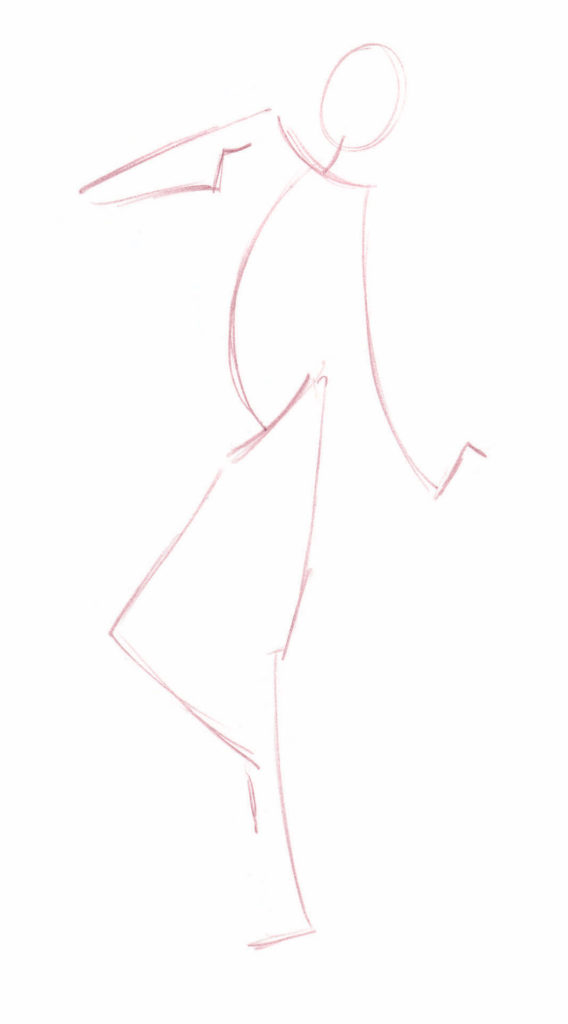
Cartoon Armatures 101
The best style to acquire to depict the man effigy is to first as simple equally possible. Forget about tracing contours. Forget well-nigh shadows and values. And, forget about skin and basic and facial features. What y'all demand to do is boil the figure downward to its essence, something then simple that information technology tin be drawn quickly; something so clear that in that location's no question about what it represents. When people who don't know how to draw want to sketch a person, they often end upwardly with a stick figure. That's about as uncomplicated as you can become. The problem with the standard stick figure is that it doesn't possess the information on which to base a drawing. However, with a couple of additions and modifications, you can plow a simple stick figure into a foundation for a drawing.
Figuring out Stick Figures
If you lot take a stick figure and add some shoulders and hips, you become something that looks a lot more like a human than the usual stick figure. If you also add in some hands and feet and some bends at the elbows and knees, some volume to the head and continue all the parts roughly in proportion to a real person, y'all'll cease up with something that'south both easy to draw and recognizable equally a homo. In art, this simplified figure is chosen an armature. Learning to draw armatures is a smashing place to start in effigy drawing. Yous don't take to worry virtually making the armature await like the person you lot're drawing. Once you take away all the details, what you're left with is a diagram of how someone is posed. Past reducing the effigy to this unproblematic representation, y'all gain the power to analyze and exaggerate poses you see and invent poses you imagine.
Hold Off on The Gestures…For Now
One important note about drawing armatures: This is non gesture drawing. Gesture drawings are a better way to build a drawing because they show both the pose and the proportion of your figure (similar an armature does), just they also give your drawing a rhythm and flow. The armature is a more concrete, rigid system that hones your sense of proportion and is an easy and articulate mode to build a pose. Gesture drawing is an important skill to master. But for now, stick with the armature as a style to help you see beyond the surface of your subject. At present let'southward movement on to a demonstration on drawing armatures.
1. Draw the Head
The beginning stride in drawing an armature is to draw an oval for the caput. I start with the caput because it establishes the proportion for the residuum of the torso. Pay particular attention to the angle at which the head tips to the left or correct. 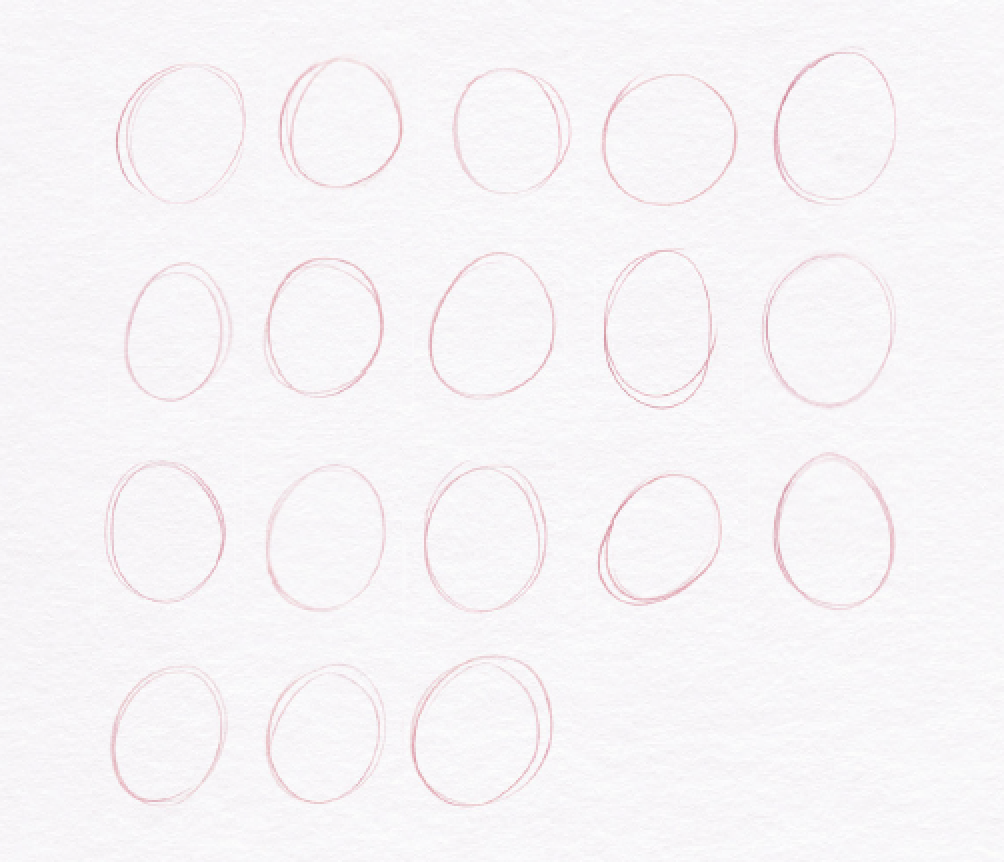 When y'all describe your oval, you don't need to go around and around. Just draw an ellipse in single lines one time around or so. It helps to do drawing circles of various sizes and elongations until yous can describe a simple oval shape consistently.
When y'all describe your oval, you don't need to go around and around. Just draw an ellipse in single lines one time around or so. It helps to do drawing circles of various sizes and elongations until yous can describe a simple oval shape consistently.
two. Depict the Confront Map
At present, y'all must define how the head is tipping forwards or backward. You have to call up of your shape as a sphere and not a flat circle. A sphere has three dimensions, where as a circumvolve has merely 2. I know the page is flat and your circle only has two dimensions, simply you tin can brand it appear to have depth simply by wrapping a line around the sphere'southward equator. 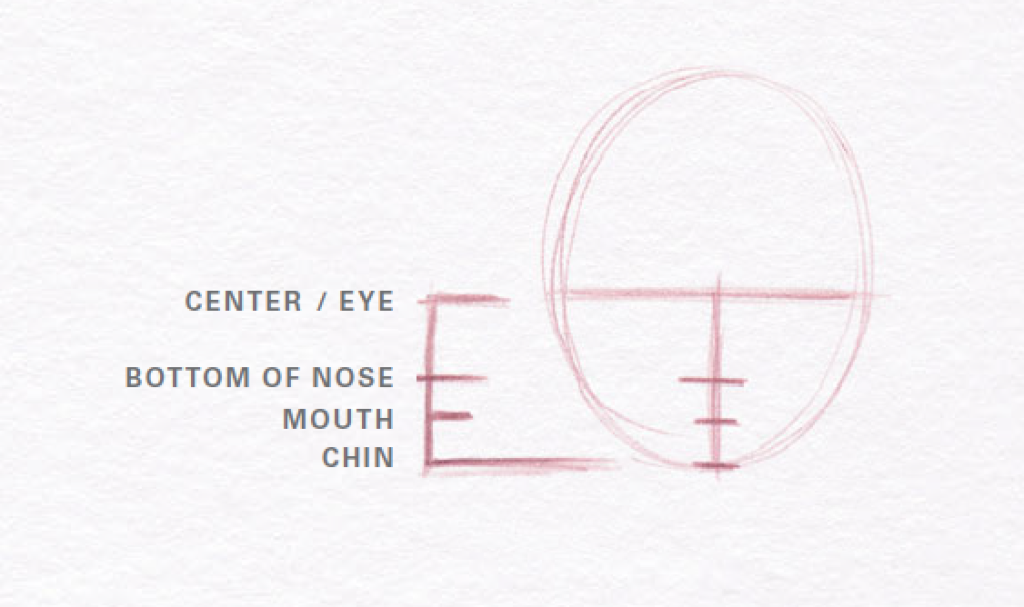 To see how this works in real life, wrap a rubber band around a ball or draw a line effectually the heart of a balloon. As you tip the ball or balloon away from you, the curve of the line appears to arch up; if you tip it forwards, the curvation will appear to dip downward.
To see how this works in real life, wrap a rubber band around a ball or draw a line effectually the heart of a balloon. As you tip the ball or balloon away from you, the curve of the line appears to arch up; if you tip it forwards, the curvation will appear to dip downward. 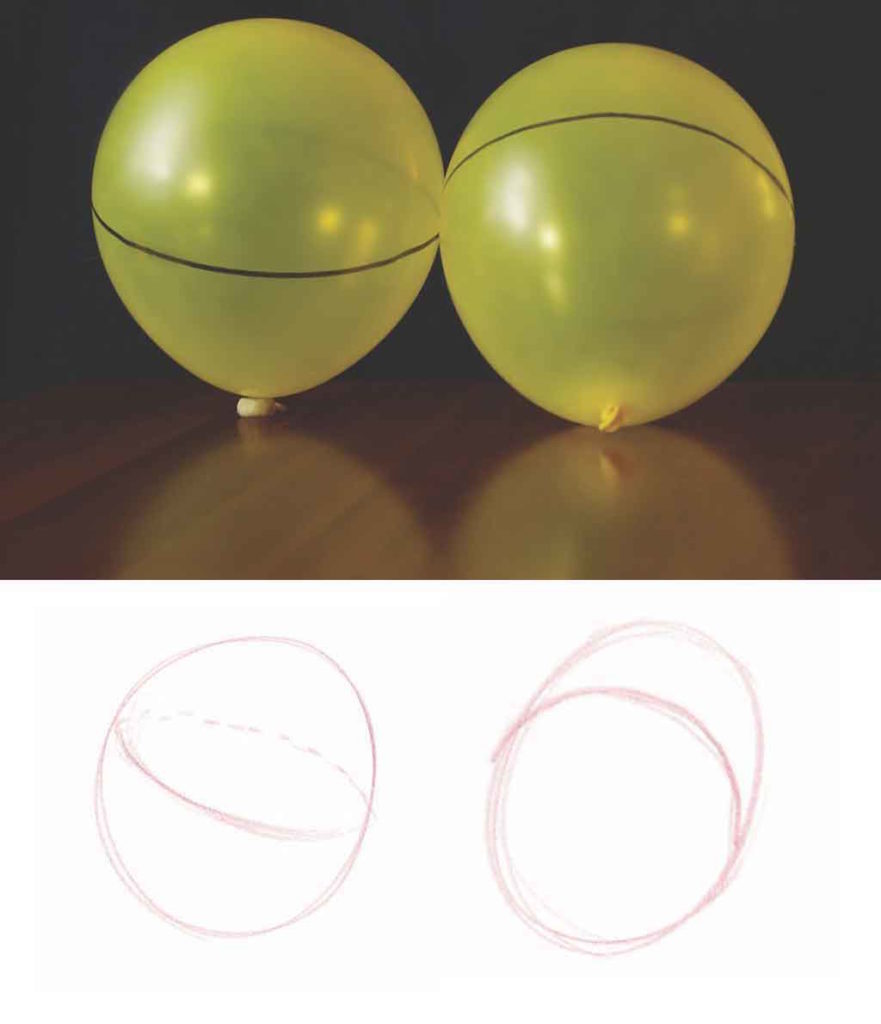 This line around the middle of the oval represents the centre line. The chin will fall at the bottom of the oval. The lesser of the olfactory organ is halfway in betwixt the centre and the mentum. The rima oris is halfway betwixt the nose line and the chin. Yous can add those lines if you want to show the management and tilt of the head.
This line around the middle of the oval represents the centre line. The chin will fall at the bottom of the oval. The lesser of the olfactory organ is halfway in betwixt the centre and the mentum. The rima oris is halfway betwixt the nose line and the chin. Yous can add those lines if you want to show the management and tilt of the head. 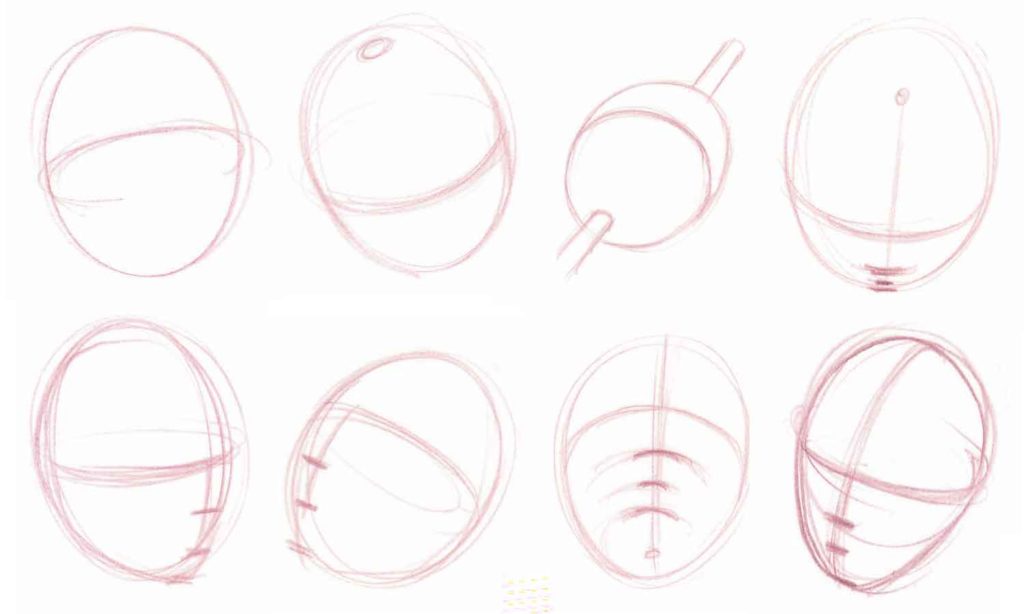
three. Add the Neck
You lot volition want to add together a line for the neck. This line generally represents the spine. Don't worry about beefcake yet; simply accept the line kickoff at the back of the sphere contrary the face up. The neck bends and twists to a large caste, and so be sure to give it some curvature. Even when a person is looking straight forward, you can see the natural curvature of the neck in profile. 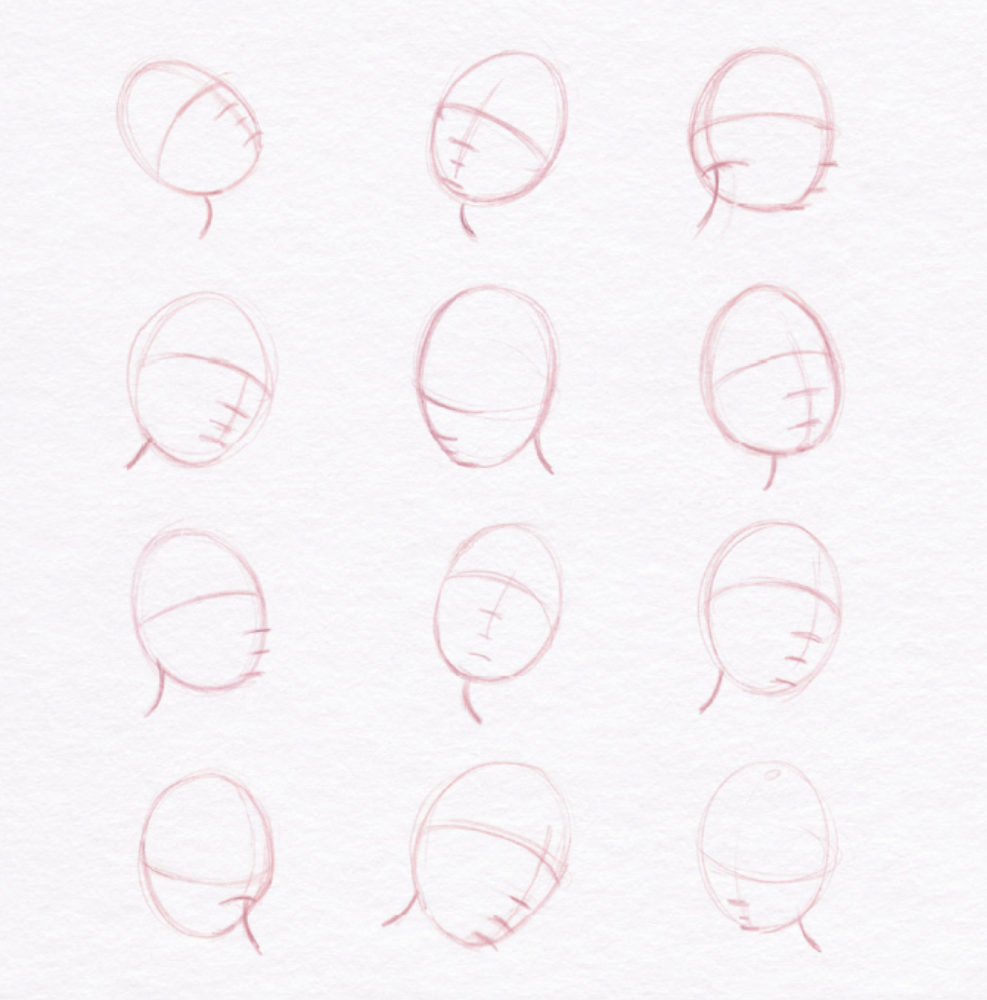
four. Draw the Body
The next step is to piece of work down the trunk to the anxiety. Depict a line that represents the torso. Like the neck, this line follows the general motion of the spine, merely you're not trying to describe the curves of the spine itself. Don't worry virtually the outer curve of the spine at the rib cage or the inner bend at the waist. You're trying to capture the general movement of the torso down to the hips. 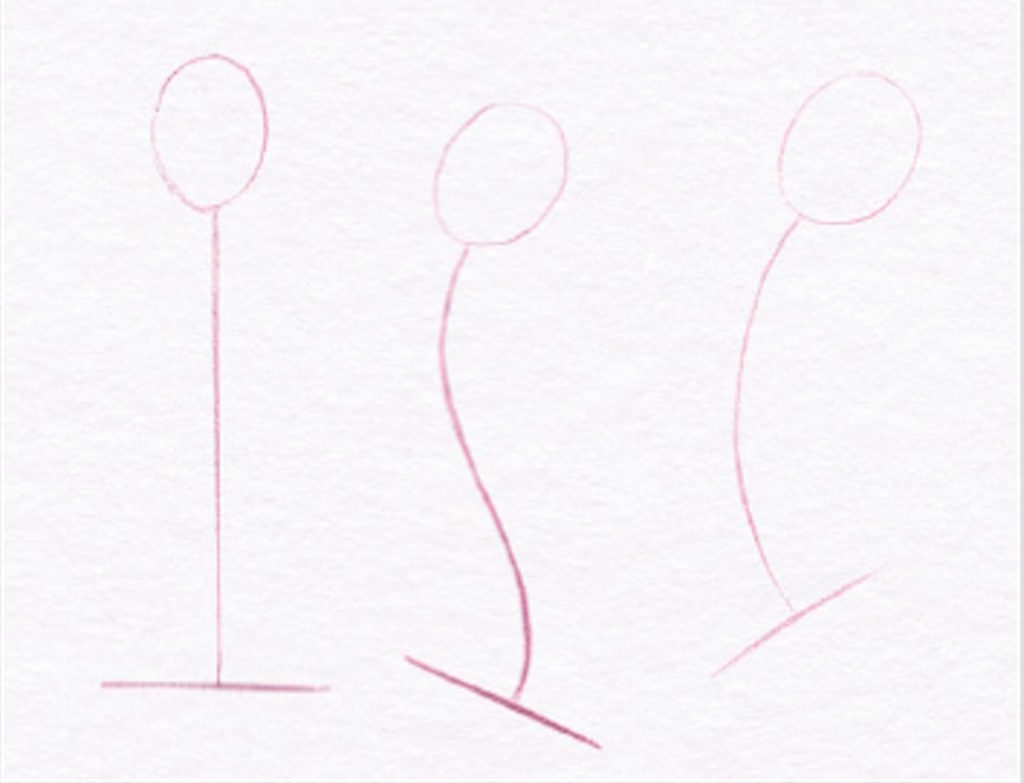
5. Add the Hips
On the armature, the hips are represented past a direct line that is at a 90-caste angle from the base of the spine. This makes it easy to figure out how to draw the hip line. Once you've drawn the torso line, the hip line will exist perpendicular to information technology. Facing forwards, the hips are wider than the head. But, as the body turns to the side, this line foreshortens and could be as small every bit a unmarried point. 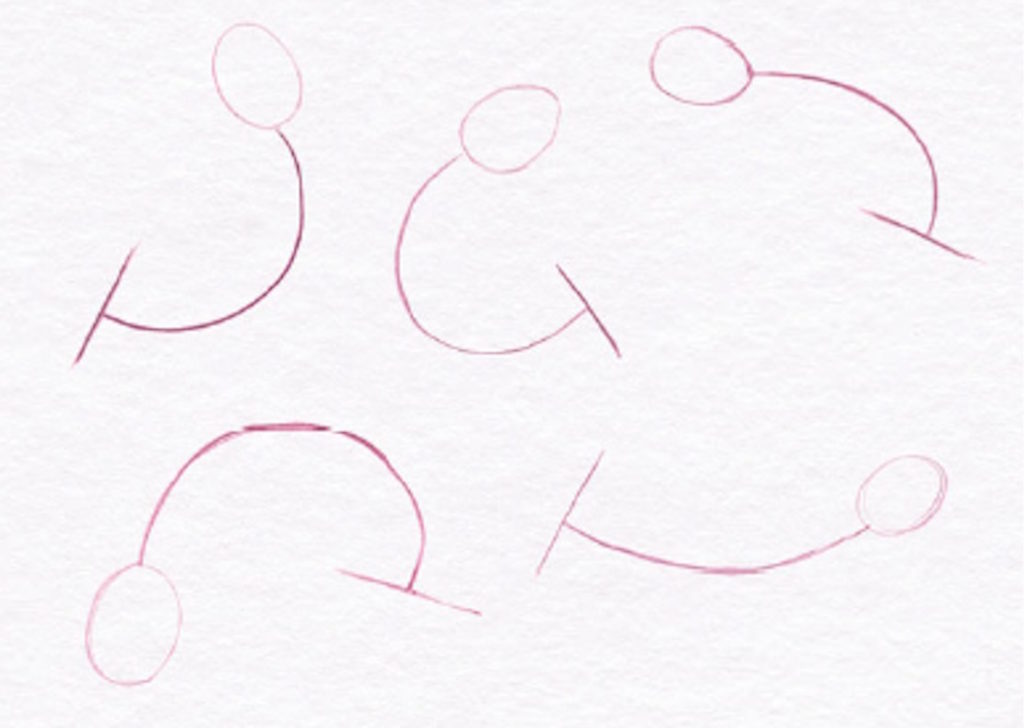
6. Draw the Legs
The legs should exist about as long as the head, neck and torso combined (bold the body isn't foreshortened), bending at the middle for the knee. Add a elementary line to bespeak the direction of the anxiety and to anchor your figure on the ground. 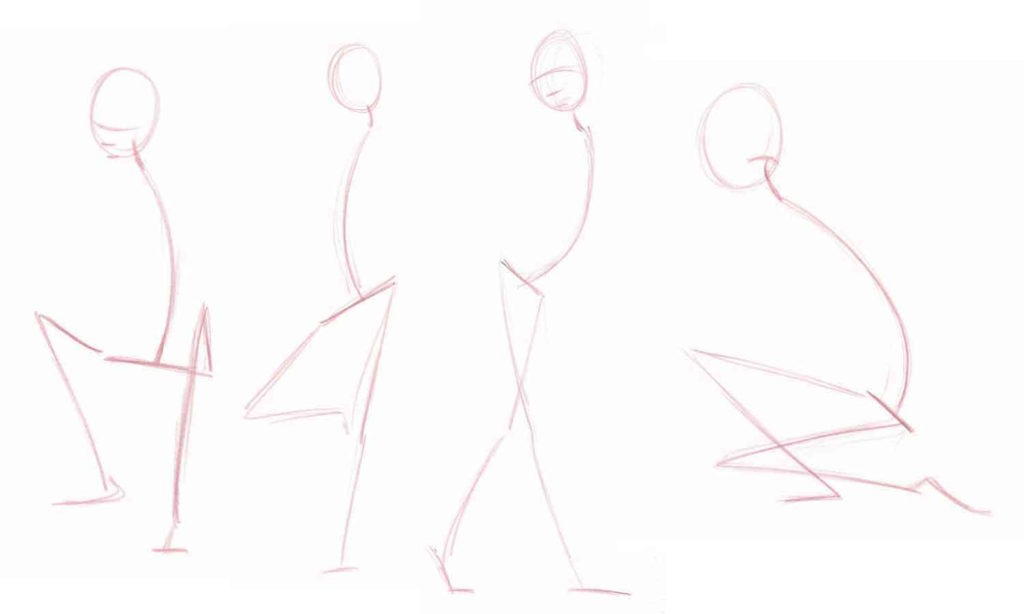
7. Draw the Shoulders and Arms
Each shoulder moves independently, so they aren't represented past a straight line like the hips are. When the shoulders are shrugged or rotated forward, the shoulder line should reflect this with a curved line. 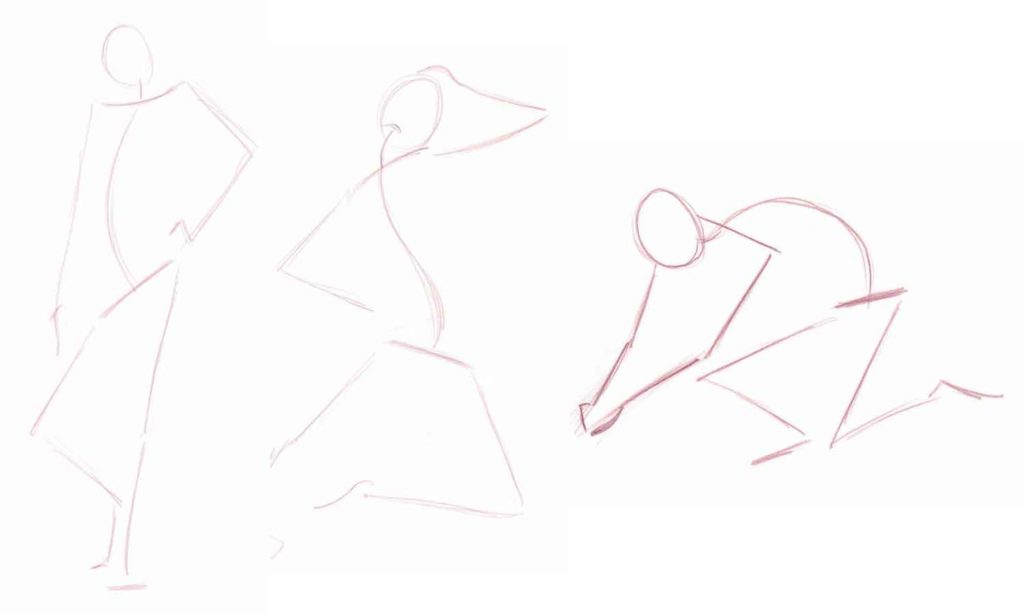 The shoulder line connects to the torso at a correct angle, similar to the hips, just it curves upward, down, forward or back as information technology moves away from the body, according to the pose. Add together the arms and hand in a similar way to the legs and feet, only a little shorter.
The shoulder line connects to the torso at a correct angle, similar to the hips, just it curves upward, down, forward or back as information technology moves away from the body, according to the pose. Add together the arms and hand in a similar way to the legs and feet, only a little shorter. 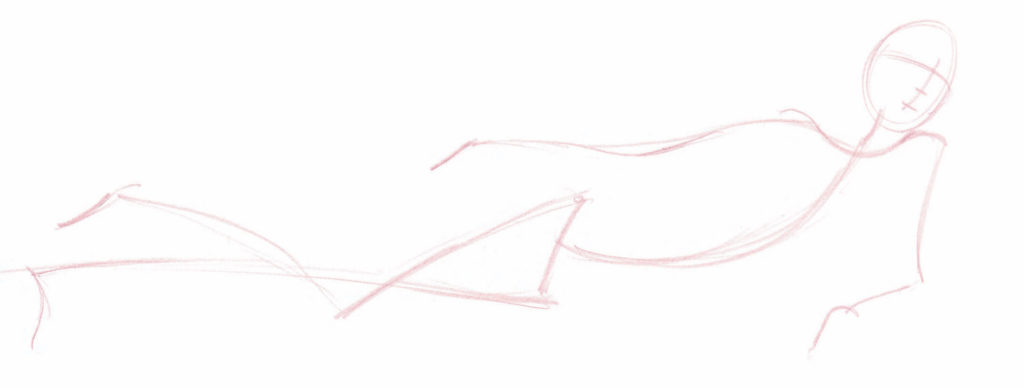
Proportions
In one case you're comfortable posing an armature, you'll need to start paying attention to getting the proportion correct. Every person is a little flake different. Some people have long legs and a short torso. Other people might have long arms or broad shoulders or a squat head, then yous take a lot of leeway in drawing these things. That said, the classical proportion of an adult is roughly seven-and-a-half heads tall. The tiptop of the head to the pubic area is four heads loftier. The legs are most 3-and-a-half head lengths tall, only many people stretch them to a more statuesque four heads.
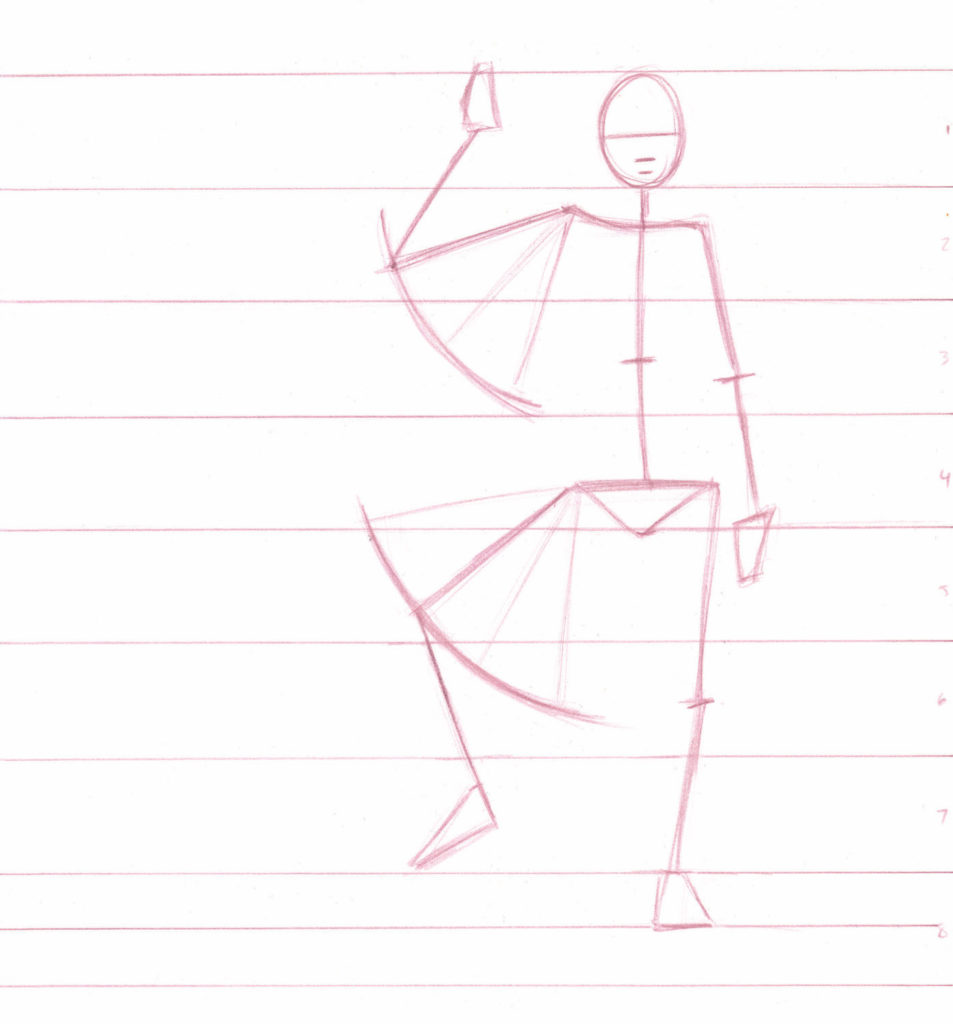
Armatures in Movement
A great way to exercise the armature is to requite it something to do. This armature is hoisting a heavy sack onto his shoulder. 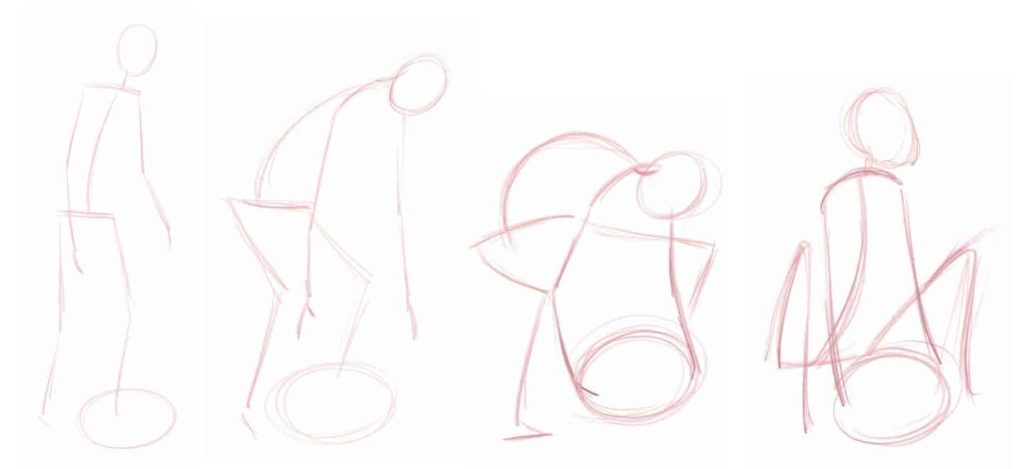 In each of the drawings, I had to consider how he would motility and how he would stay balanced. It helps to deed out the motion yourself before getting your armature to do the same move on the folio.
In each of the drawings, I had to consider how he would motility and how he would stay balanced. It helps to deed out the motion yourself before getting your armature to do the same move on the folio. 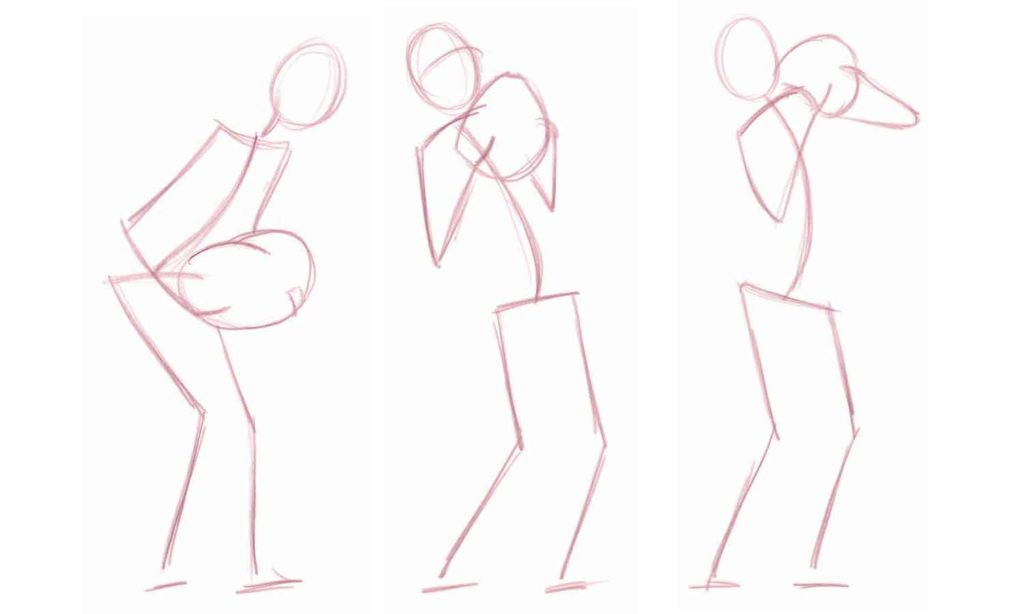 Exercise:Finish here and choose one of the armatures you drew from a reference. Picture in your heed the motion the person was going through when that image was captured. Act it out if you tin. Now try to draw armatures that breathing the motion before and after the moment you lot drew in the flick.
Exercise:Finish here and choose one of the armatures you drew from a reference. Picture in your heed the motion the person was going through when that image was captured. Act it out if you tin. Now try to draw armatures that breathing the motion before and after the moment you lot drew in the flick.
Moving Toward Gesture Drawing
Armatures are good for analyzing the pose and clearly defining how the body is positioned. The biggest shortcoming of beginning a cartoon with an armature is that it is rigid and slow to get down on paper. Gesture cartoon is an even quicker way to convey the movement and flow of a pose while still clearly showing how the body is positioned. You need the skills of armature drawing fifty-fifty though yous're not actually putting it down on paper. Gesture drawing isn't about drawing a skeletal structure or the body'due south contours; it's about capturing the totality of the pose as i fluid drawing. That means you lot may mark the twist of the spine or the outside curve of the hips, but you lot're not thinking about those individual pieces equally much every bit you are trying to capture the energy of the total pose. It still needs to give you lot all the positional information that the armature did, merely it also needs to requite you a feeling for the whole field of study — not just how everything fits together but likewise the mental attitude and energy of the person you're cartoon. 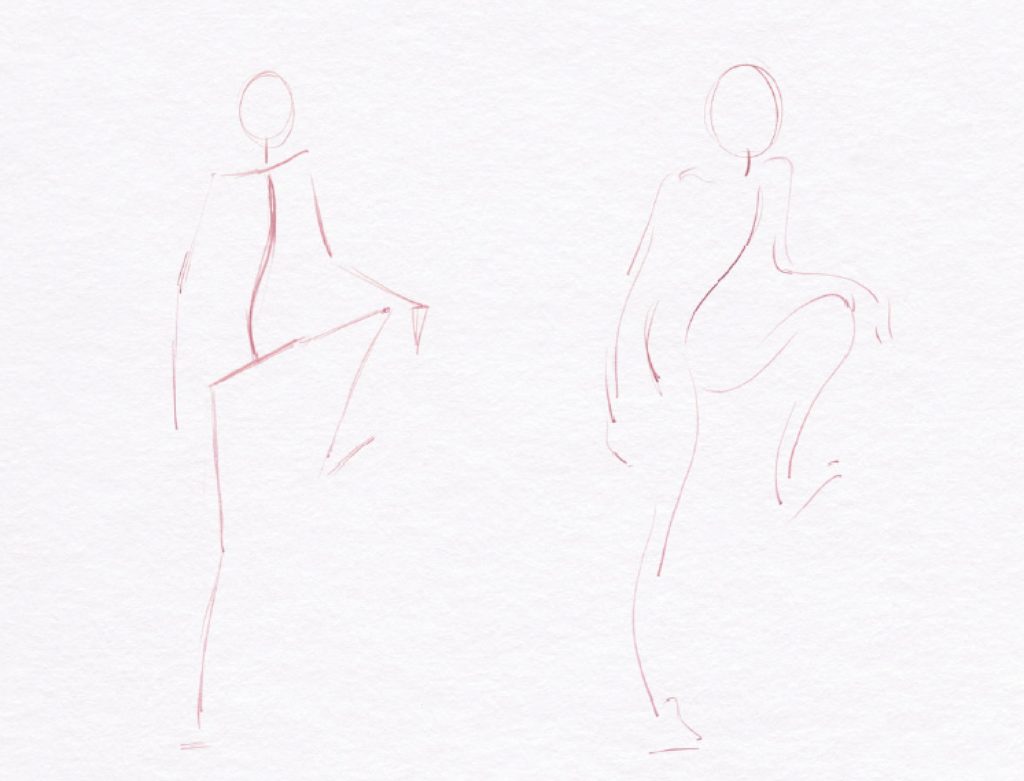 You can see the difference between the armature and the gesture in these two drawings of the same pose. Both show how the body is positioned and the proportion of the figure, but the gesture gives a sense of rhythm and flow. Yous may use a night line to emphasize the stretch at the hip or the twist through the torso and lighter, smoother lines on a relaxed arm. These initial observations, recorded in your gesture cartoon, will come through as the drawing develops and help to continue the energy and emotion through to the final rendering.
You can see the difference between the armature and the gesture in these two drawings of the same pose. Both show how the body is positioned and the proportion of the figure, but the gesture gives a sense of rhythm and flow. Yous may use a night line to emphasize the stretch at the hip or the twist through the torso and lighter, smoother lines on a relaxed arm. These initial observations, recorded in your gesture cartoon, will come through as the drawing develops and help to continue the energy and emotion through to the final rendering.
***
Now that you know how to depict armatures, you can move on to learning all in that location is to know about gesture cartoon. From there, you can motion on to the basic skeleton of the body, simplified volumes, learning major anatomy, and so how to put information technology all together for successful figure drawing. And, Josh Mellem's How to Depict People covers information technology all, with step-past-step lessons, exercises and assignments along the fashion.
Source: https://www.artistsnetwork.com/art-techniques/beginner-artist/drawing-armatures/
0 Response to "What Is the Body Twist in Nude Drawing Called"
Post a Comment